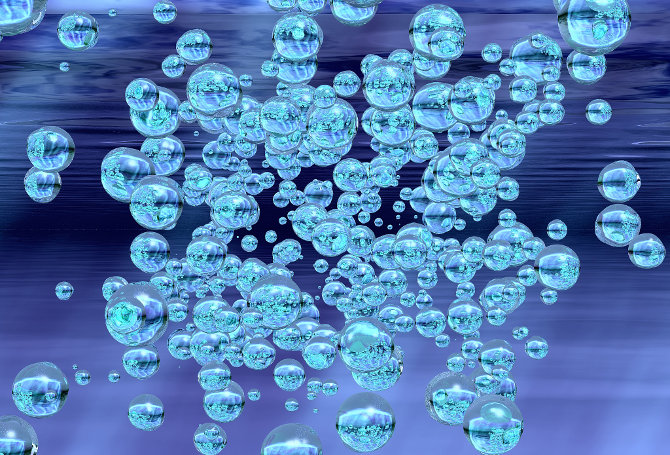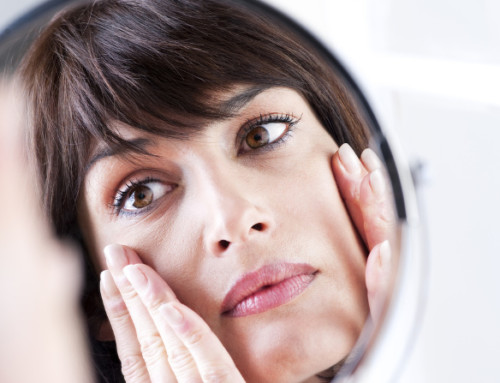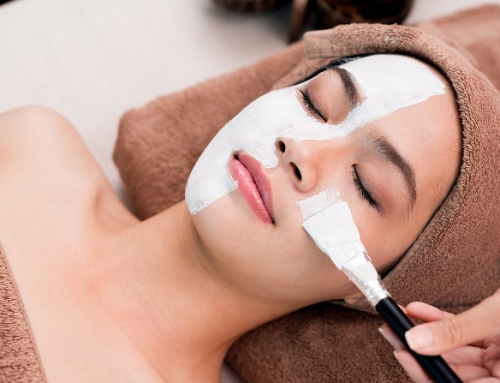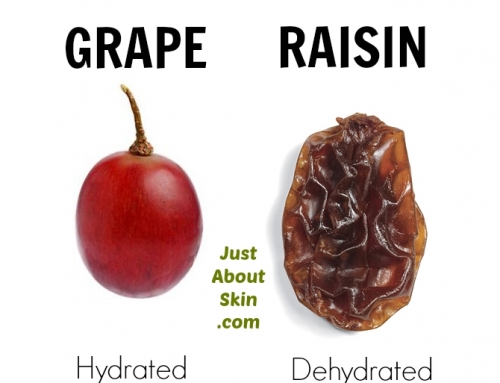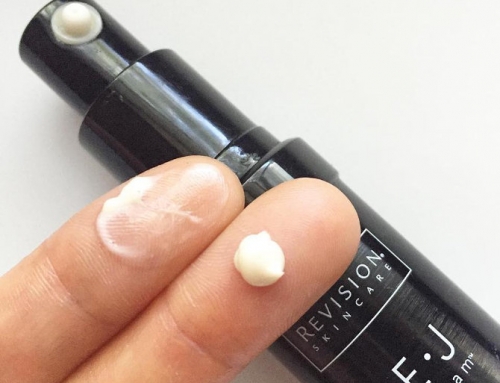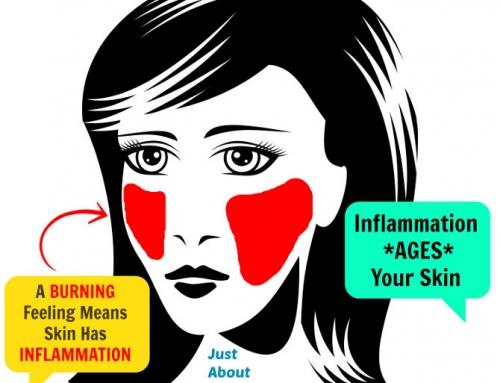I’ve talked about hydration quite a bit here and there. But I haven’t described the best way to do this. Because it is such an essential step in skin care, hydration deserves to be in the spotlight. So let’s talk about the best way to hydrate.
What Is Hydration? How Is That Different from Moisturizing?
Hydration is helping skin absorb and retain water. It’s not quite the same thing as moisturizing skin. The word ‘moisturize’ is ambiguous because it can mean either increasing water or increasing ‘oil’ (lipids). Or both. Both water and lipids make skin more ‘moist.’ But while everyone needs water, the need for oil will vary across people and at different times. Skin care products don’t make the distinction. So it helps to know what to look for.
Skin needs constant hydration because water evaporates from skin, especially when there is low humidity in the air. Drinking water isn’t sufficient to keep skin moist because water is lost too quickly via evaporation (unless you’re in a very humid climate and don’t use air conditioning). That’s where skin care ingredients called humectants can help.
Hydration is important not just for achieving moist skin. It helps minimize wrinkle formation. Dehydrated skin, especially around the eyes where the skin is thinner, wrinkles more easily. Dehydrated skin is extremely common. Most people who live in a city have dehydrated skin due to pollution.
Humectants Are Used to Hydrate Skin
To hydrate skin, you need humectant ingredients in your skin care products.
Humectants are water-binding ingredients that attract and hold onto water, and saturate skin.
Humectants work by mimicking the natural moisturizing factors (NMF’s) and glycosaminoglycans (GAG’s) in skin. NMF’s are water-binding chemicals that exist naturaally in the Stratum Corneum layer of skin. GAG’s are in the fluid that bathes collagen and elastin fibers in the dermis layer.
Some popular humectants are:
- Hyaluronic Acid (Sodium Hyaluronate)
- Sodium PCA
- Propylene Glycol (may be sensitizing on some skin)
- Butylene Glycol
- Glycerin
- Urea
- Amino Acids
- Algae Extract
Here is a list of some other humectants.
How to Hydrate Skin With A Toner
An excellent way to hydrate skin is with a hydrating toner. By this I mean a toner that is high in humectants and other hydrating ingredients. It is a non-drying toner.
Don’t mix this up with an astringent, which is an alcohol-based toner. Years ago, most toners were astringents. Today, most toners don’t have alcohol, which dries out skin. (You can read more about Alcohol In Skincare here.)
Why a toner in particular?
While you can find humectants in many serums and moisturizers (they’re everywhere in fact), a hydrating toner offers several advantages.
1). It preps the skin for the moisturizer or serum.
When you have toner on your skin, your skin absorbs more ingredients from the serum or moisturizer that is applied afterward.
Think of a sponge. Which sponge picks up more water – a dry sponge or wet sponge? A wet sponge. Skin works the same way. ‘Wet’ skin absorbs more.
How does this work exactly?
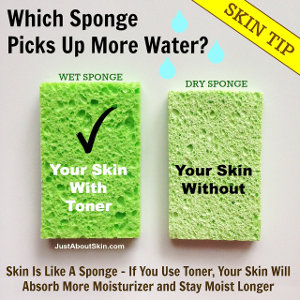 Hydrating the skin expands the volume of the outer layer of skin (Stratum Corneum), like a sponge expands after being wet. With more volume, more ingredients can be absorbed. By as much as 5-10 times!
Hydrating the skin expands the volume of the outer layer of skin (Stratum Corneum), like a sponge expands after being wet. With more volume, more ingredients can be absorbed. By as much as 5-10 times!
This is why saturating skin first (with a hydrating toner) helps your skin absorb more. It pulls in more ingredients, increasing their penetration into skin.
The water-binding ingredients in a hydrating toner not only hydrate skin but can also function as a delivery vehicle by helping to increase the absorption of other ingredients.
One of the challenges of skin care is delivering ingredients effectively into the different layers of skin.
Efficacy depends to a large extent on how much of an ingredient is delivered to its intended destination in skin versus left sitting on top of it (which happens to be a layer of dead skin cells). Ingredients that sit on top of skin don’t accomplish anything.
2). Toner keeps skin hydrated longer.
As explained earlier, hydrating toners contain water-binding ingredients that hydrate skin. Your skin stays hydrated longer with those water-binding ingredients working to hold onto water (so it doesn’t evaporate as quickly).
Toner is best applied right after cleansing, while skin is still damp and moist. Moist skin allows more of the toner to penetrate skin, enabling longer-lasting hydration.
3). Toner makes it easier to apply serums and moisturizers.
Products apply more evenly and glide on more easily when the skin is already moist with toner.
4). Toner saves serum or moisturizer.
By using a hydrating toner before a serum or moisturizer, you end up having to use less of that serum or moisturizer.
5). Toner also adjusts the pH of your skin (if it has been changed by cleansing), bringing it back to slightly acidic.
Your skin’s natural pH is slightly acidic (4.5-5.5). Unfortunately, some cleansers are alkaline (the pH is greater than 7.0). A toner balances the pH in your skin.
6). Toner introduces water-soluble performance ingredients into skin.
These days, toners do more than just hydrate skin. The better ones contain other beneficial ingredients, such as calming, anti-inflammatory, antioxidant, exfoliating, or age-fighting ingredients.
I highly recommend including a hydrating toner in your skin care routine. It’s helpful for everyone. The good news is that toner is suitable for any skin type, provided that you are not allergic to any of the ingredients and you are using one that is correct for your skin type.
It will not exacerbate acne-prone or oily skin. In fact, if you have acneic or oily skin, a hydrating toner is an excellent way to stay hydrated without over-clogging pores. Oily skin can dehydrate easily with acne treatment products, many of which tend to be drying.
How to Apply A Hydrating Toner
A toner goes onto skin right after you cleanse (when skin is still moist) and before you apply anything else (serum, moisturizer, sunscreen, makeup).
Toners are liquids that may come with or or without a spray. If the toner comes with a spray, spray once on each cheek and once on the forehead. Then quickly glide your fingertips to spread over the whole face.
If no spray is provided, pour a few drops onto your fingertips and quickly glide them around your face because it absorbs fast. You can use a cotton pad if you find that more convenient. A cotton pad is easier but uses up a lot more product. So much is wasted on the cotton pad. I personally prefer to use my fingertips.
Another method is to pour a small amount into the palm of one hand. With your other palm, quickly spread the toner across your hands up to the fingertips. Then press your palms onto your face. For the eye area you can press with your fingertips into skin.
What to Look For When Shopping
A hydrating toner can be called by many different names, which can make it confusing to find one. Each brand has its own vocabulary. You might see a toner labeled as: toner, softener, softening lotion, hydrating lotion, clarifying lotion, balancing lotion, purifying lotion, essence, lotion, tonic, mist, spray.
The word ‘lotion’ is the most confusing, since lotion (in U.S. English) almost always means a liquid emulsion that is thicker than a fluid but looser than a cream. Nevertheless, some Asian brands call their toner a ‘lotion’ even if the liquid is as fluid as water!
Unfortunately, you’ll have to read the toner’s description to assess whether it is meant for hydration. Look for words such as ‘hydrating’ and ‘moisturizing’ in the product’s description.
You can also look at the consistency. Toners are clear liquids. Not gels or lotions.
The best way is to look at the ingredient list. See if Hyaluronic Acid or another humectant is among the first 5 ingredients listed on the package. Note that Hyaluronic Acid is called ‘Sodium Hyaluronate‘ on the actual ingredient list (an ingredient naming convention).
Also note that a hydrating toner is completely different from an astringent toner, which absorbs excess oil and tightens skin. Many of the toners you find in a drugstore targeted for acne are astringent in nature. So be careful with those and check the label and ingredient list.

